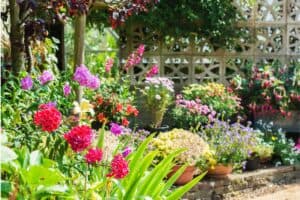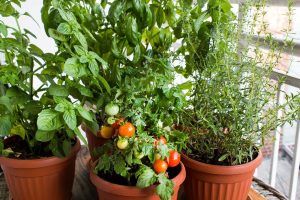The quintessential English cottage garden evokes a sense of charm, romance, and natural beauty. With its abundant flowers, lush foliage, and meandering pathways, this style of garden is a timeless classic that captures the essence of traditional English countryside living. In this blog post, we’ll explore the key elements and essential tips to help you create your own picturesque English cottage garden. Get ready to immerse yourself in the beauty and serenity of this beloved gardening style.
1. Embrace Informality and Variety:
English cottage gardens are known for their informal, free-flowing style. Embrace a mix of flowers, herbs, and even vegetables to create a diverse and visually captivating landscape. Incorporate a wide variety of plants, both annuals and perennials, with different heights, textures, and colors. This will add depth and visual interest to your garden, mimicking the eclectic charm of the English countryside.
2. Select Cottage Garden Plants:
Choose plants that are well-suited for a cottage garden style. Traditional favorites include roses, delphiniums, foxgloves, lupines, hollyhocks, lavender, and peonies. Include fragrant flowers like sweet peas and old-fashioned roses to enhance the sensory experience. Consider incorporating cottage garden herbs like thyme, sage, and rosemary, which not only add beauty but can also be used in culinary endeavors.
3. Create Layered Planting Beds:
To achieve that lush and abundant look, create layered planting beds. Start with taller plants at the back or center of the beds, gradually transitioning to medium-sized and then low-growing plants at the front. This layering effect creates depth and allows each plant to shine while creating a harmonious overall composition.
4. Include Climbing Plants and Structures:
Integrate climbing plants and structures to add vertical interest and create a sense of enclosure. Install trellises, arches, or pergolas for roses, clematis, or sweet peas to climb upon. This not only adds vertical beauty but also provides an opportunity to create secluded garden rooms within your larger cottage garden.
5. Maintain a Cottage Garden Aesthetic:
A cottage garden should feel natural and slightly wild. Avoid overly formal or manicured elements. Embrace a slightly untamed look by allowing plants to gently spill over paths, creating soft edges and curves. Encourage self-seeding plants to grow and spread naturally, giving your garden an authentic, effortless appeal.
6. Encourage Wildlife:
A cottage garden is a haven for wildlife. Attract birds, bees, butterflies, and other beneficial insects by incorporating pollinator-friendly plants and providing water sources such as birdbaths or small ponds. Avoid the use of pesticides to ensure a healthy ecosystem within your garden.
Creating your own quintessential English cottage garden is a delightful journey into the beauty and charm of traditional English gardening. By embracing informality, variety, and layered planting, selecting the right cottage garden plants, incorporating climbing plants and structures, and maintaining a natural aesthetic, you can capture the timeless allure of this garden style. Remember to welcome wildlife and embrace the whimsical nature of a cottage garden. For further guidance and personalized advice, don’t hesitate to consult Tony Harding Garden Adviser. May your journey to create an English cottage garden bring you joy, tranquility, and a touch of enchantment in your outdoor space!



